Double Doctorate Literary Lion Vidyodaya Vibhushana Sahithya Kala Shiromani Professor Sunil Ariyaratne – by Sunil Thenabadu
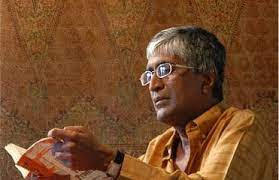
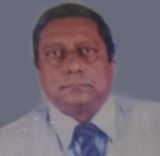 Scholarly senior double doctorate Professor Sunil Ariyaratne, was a visual sensation of the Department of Sinhala and Mass communication, rendered and fulfilled inestimable artistic sustenance to the University of Sri Jayewardenepura during his long tenure.Senior Professor lived his life and continues being, a researcher, poet, lyricist, and a film director. He became a favourite of all of us because he shared his amazing aptitude not only with his students but with the rest of the world with his astonishing skill as a poet, lyricist, researcher, script writer and film director. Professor had contribute song lyrics for seventy Sinhala films an unbeatable record for current lyric writers in the present era.
Scholarly senior double doctorate Professor Sunil Ariyaratne, was a visual sensation of the Department of Sinhala and Mass communication, rendered and fulfilled inestimable artistic sustenance to the University of Sri Jayewardenepura during his long tenure.Senior Professor lived his life and continues being, a researcher, poet, lyricist, and a film director. He became a favourite of all of us because he shared his amazing aptitude not only with his students but with the rest of the world with his astonishing skill as a poet, lyricist, researcher, script writer and film director. Professor had contribute song lyrics for seventy Sinhala films an unbeatable record for current lyric writers in the present era.
The artistic personality, Vidyodaya Vibhushana Sahithya Kala Shiromani Sunil Ariyaratne Kuruwita Bandara was born on 28 July 1949 popularly known as Sunil Ariyaratne, had schooling at St. John’s, Nugegoda. In school he excelled in publishing assortment of diminutive stories, Ähinsakayo” at the tender age of 12 years which foretold the emergence of an aesthetically illustrious celebrity. Subsequent inscriptions were “Api Okkoma” a poetic assortment “Alakeshwara” a historical novel and “Siyothunta Rekawal” a poetic narrative.
His curiosity for drama emerged from childhood been dreadfully passionate to Sinhala literature and art contributing the script to a play “Amal Biso”. With his neighbours and peers had embarked in producing plays as well. He had written a script for Kumaratunga Munidasa’s “Magul Kema” while still being a student he produced a drama “Deyyo” to the script of his elder brother Tilakaratne Kuruwita Bandara who inspired him along with his teachers. He was only 15 years, when he won acclamation as a lyricist for his popular song, ‘Sakura Mal Pipila’,sung by Nanda Malini.
 While in school he visualized the fantasy of higher education. He entered University of Sri Jayewardenapura then called “Vidyodaya” , that encouraged and motivated the resolute Sunil Ariyaratne, to prolong his artistic vocation. He received a first-Class Honours degree specializing in Sinhala. He wrote a novel “Jeewithqaya geethayak wewa” along with skilful Buddhadasa Galappaththi and Jayalath Monoratne published a poetry book “Dolosmahe Pahana.
While in school he visualized the fantasy of higher education. He entered University of Sri Jayewardenapura then called “Vidyodaya” , that encouraged and motivated the resolute Sunil Ariyaratne, to prolong his artistic vocation. He received a first-Class Honours degree specializing in Sinhala. He wrote a novel “Jeewithqaya geethayak wewa” along with skilful Buddhadasa Galappaththi and Jayalath Monoratne published a poetry book “Dolosmahe Pahana.
He commenced his University scholarly career as a temporary lecturer at University of Kelaniya then at University of Jaffna and thereafter as a lecturer at the department of Aesthetics studies at the University of Kelaniya finally to the academic staff at the University of Sri Jayewardenepura in 1985, before reaching the pinnacle as Senior Professor in year 2000 ,thus becoming the youngest Professor in the University configuration. As a senior Professor of Sinhala Language and Mass Media in the Communication Faculty at Sri Jayewardenapura University, received his first ‘Doctor of Literature’ Degree in 2011, from the University of Visual and Performing Arts. Although Doctorates are customarily awarded to retired university lecturers, for outstanding contributions, Professor Ariyaratne was the first to receive it while still teaching.
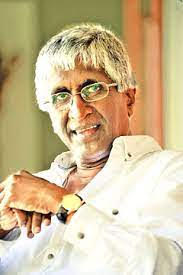 Professor was known in University spheres as a lecturer, the rest got to know him as a versatile lyricist in “Pahan kanda” , “Yathra” , “Pembara ”, Madhu badun, Adaheraya , Shwetha rathriya , some wonderful creations since year 1983.Not only had his lyrics, even his researches clutched us to a novel world of opinion. He had confided that though Sri Lanka is rich in Literature only fewer researchers had been made. Some of his research topics were so unique and timely which won him a number of national and state awards. He extensively researched and wrote a book on Baila and Kapirigngna for which he won a State literary award. For his publications on “Grammar phone Era”, Kerol pasam kantharu , Mahinda prabanda , Manawasinghe geetha prabanda, , Purana sinhala nadagam. Copy editing, Gandarwa apadana , Sinhala Chithrapati geethawali are also some of professor’s triumphant researches accomplished since year 1985.
Professor was known in University spheres as a lecturer, the rest got to know him as a versatile lyricist in “Pahan kanda” , “Yathra” , “Pembara ”, Madhu badun, Adaheraya , Shwetha rathriya , some wonderful creations since year 1983.Not only had his lyrics, even his researches clutched us to a novel world of opinion. He had confided that though Sri Lanka is rich in Literature only fewer researchers had been made. Some of his research topics were so unique and timely which won him a number of national and state awards. He extensively researched and wrote a book on Baila and Kapirigngna for which he won a State literary award. For his publications on “Grammar phone Era”, Kerol pasam kantharu , Mahinda prabanda , Manawasinghe geetha prabanda, , Purana sinhala nadagam. Copy editing, Gandarwa apadana , Sinhala Chithrapati geethawali are also some of professor’s triumphant researches accomplished since year 1985.
In 1989 he travelled to Madras and to study Tamil.Via his proficiency in the Tamil language in 1991 he wrote a thesis named “Demala Sahithya Ithihasaya”. In 1994 translated Tamil folk tales with appropriate illustrations, the Tamil Ramayanaya too. Then the genius Professor successfully accomplished the Tamil Sinhala alphabet, writing of Tamil letters, Tamil Buddhism for which he won national awards. He had understood while in Tamil Nadu and Jaffna where Monks who follow Tamil Buddhism preach and recite stanzas in Tamil..He has also written a book on 10 acclaimed musicians in our country to pay homage to them. The book was titled ‘Gandharwa Apadhana’ featuring maestro musicians in the likes of R. Muththusamy, M.K. Rocksamy Mohammed Ghouse and Mohammed Sally,the only one of its kind ever written.
His exertions were vastly acclaimed in national and international media; The University of Visual and Performing Arts of Sri Jayewardenapura conferred Professor Sunil Ariyaratne his second ‘Doctor of Literature’ honorary Degree in year 2015, a sporadic exploit for any scholar.
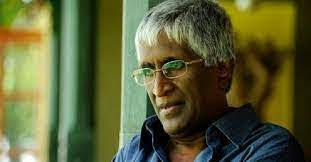 Among the many Sinhala movies directed by him the more recent ones are Uppalawanna, Sacred Cow, Kusa Pabha,Paththini and Ali Kathawa.He had produced and directed Sudu Sevanali. He had contributed to the music scores in “Sacred Cow and “The City”.The scripts of the films Sudu Sevanali ,Ali Kathawa and Paththini were Professor’s.In year 2018, Ariyarante directed a historical story of Bimba Devi Alias Yashodara. It was screened on April 26, at 85 cinema halls becoming the biggest number of the simultaneous screening in Sri Lanka. Later was screened in many overseas countries including Australia. The film received mostly positive reviews from the critics.
Among the many Sinhala movies directed by him the more recent ones are Uppalawanna, Sacred Cow, Kusa Pabha,Paththini and Ali Kathawa.He had produced and directed Sudu Sevanali. He had contributed to the music scores in “Sacred Cow and “The City”.The scripts of the films Sudu Sevanali ,Ali Kathawa and Paththini were Professor’s.In year 2018, Ariyarante directed a historical story of Bimba Devi Alias Yashodara. It was screened on April 26, at 85 cinema halls becoming the biggest number of the simultaneous screening in Sri Lanka. Later was screened in many overseas countries including Australia. The film received mostly positive reviews from the critics.
On 17 March 2020, he launched the second volume of Gandharwa Apadana where 06 books were written on 12 musicians an appropriate tribute to them including of some deceased musicians.
His first direction was Minwallala in year 1970 “Anupama” in 1978 continued entertaining people with “Siri Bo Iyya” “Baba Ketu Hati” “Kele mal”, ‘Kristhu Charithaya” lately in year 2018 ‘Nidahase Piya” etc., He had confessed that he would in no way retreat from films since it is a gigantic passion that is embedded in his genes.
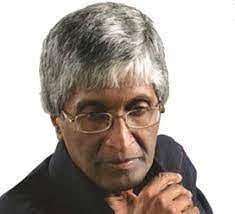 Prof. Sunil Ariyaratne’s eighteenth film direction venture was ‘Uppalawanna’ having directed 17 films including ‘Anupama’,’Siribo Aiya’, ‘Sarungale’, ‘Kristhu Charithaya’ etc. of which some were box office hits and award winners at ‘Sarasavi’ and Presidential award ceremonies
Prof. Sunil Ariyaratne’s eighteenth film direction venture was ‘Uppalawanna’ having directed 17 films including ‘Anupama’,’Siribo Aiya’, ‘Sarungale’, ‘Kristhu Charithaya’ etc. of which some were box office hits and award winners at ‘Sarasavi’ and Presidential award ceremonies
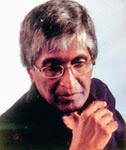 The film was dubbed as a contemporary ‘Theiri Gatha’ or the doctrine preached to female disciples of Lord Buddha, it is the first film highlighting the life of a Bikkhunis ,a female monk.
The film was dubbed as a contemporary ‘Theiri Gatha’ or the doctrine preached to female disciples of Lord Buddha, it is the first film highlighting the life of a Bikkhunis ,a female monk.
The story was set against the backdrop of the grim period of the1989 insurrection. It revolves around three Bikkhunis representing three distinct stages played by Malani Fonseka the eldest, Sangeetha Weeraratne as ‘Uppalawanna’, the youngest ‘Nanduththara’ by child actress, Sandali Welikanna. Though living in solitude as a religious discipline is restricted to females, one day a young university student runs into the premises of the hermitage after killing another student. He too had received fatal injuries and is met by Uppalawanna. Nearly two hours of the story is depicted around the emotional struggle between the two.
“This story based on the script written again by veteran script writer, Tissa Abeysekera is not to justify or criticise any government or any other party involved in the insurrection,” Prof. Ariyaratne explained. “This is purely to analyse the mental struggle of a young female monk who was expected to conduct a disciplined life.
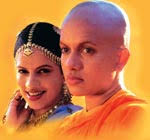 While ‘Uthpalawanna’ is the first film directed depicting the lives of female monks, Sunil Ariyratne was the first filmmaker to do a film on the life of Jesus Christ with his ‘Kristhu Charithaya’. Speaking on the selection of religion related themes Prof. Ariyaratne had addded “this is a country with different ethnic backgrounds and religions. I did a film on Jesus Christ and I was delighted when. Milina Sumathipala invited me to do a film relating to Buddhism,”.
While ‘Uthpalawanna’ is the first film directed depicting the lives of female monks, Sunil Ariyratne was the first filmmaker to do a film on the life of Jesus Christ with his ‘Kristhu Charithaya’. Speaking on the selection of religion related themes Prof. Ariyaratne had addded “this is a country with different ethnic backgrounds and religions. I did a film on Jesus Christ and I was delighted when. Milina Sumathipala invited me to do a film relating to Buddhism,”.
When queried whether he believes that these types of films help to bring back the audience to the theatres, the veteran filmmaker said, “Anyway there is a drop in the audience patronising the cinema when compared to the 70s and the 80s. This is not a failure of the film industry alone. Cinema is not a medium that would one day disappear into thin air. It’s a medium that will continue with ups and downs. This is a common phenomenon even with other media like music and drama. But the difference between the other media and the cinema is that this is an art form that had be maintained with lot of money. But our audience never refuse a good work of cinema,”
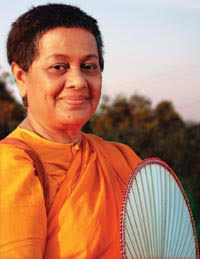 Speaking on the contribution made by the veteran actress Malani Fonseka, the filmmaker said “Malani played the role of a mature female monk. Actually ‘Uppalawanna’ was coloured up by her performance. In addition to making a huge sacrifice by shaving her head for the film, Sangeetha did 100% fairness to her character. And I also must mention the performance of child actress Sandali Welikanna who also cut her long hair for the film,”.
Speaking on the contribution made by the veteran actress Malani Fonseka, the filmmaker said “Malani played the role of a mature female monk. Actually ‘Uppalawanna’ was coloured up by her performance. In addition to making a huge sacrifice by shaving her head for the film, Sangeetha did 100% fairness to her character. And I also must mention the performance of child actress Sandali Welikanna who also cut her long hair for the film,”.
Among the other leading characters in ‘Uppalawanna’ Roshan Ravindra plays the role of a young rebel while Jagath Chamila, plays a university student who becomes a victim of the terror. He is also the lover of ‘Uthpalawanna’ before she takes robes, and his character also represents a talented traditional dancer descending from a generation of dancers.”The selection was not so difficult as Sanath Wimalasiri himself is a professional dancer and teacher and his father played by Rohana Beddage who is well experienced in conventional dancing,”
Dharmadasa Hemapala art directed the film while Vasantha Vittachchi handled the make up. Production manager of ‘Uppalawanna’ was Prasanna Kithalagama while A. D. Ranjith Kumara played the role of production executive.
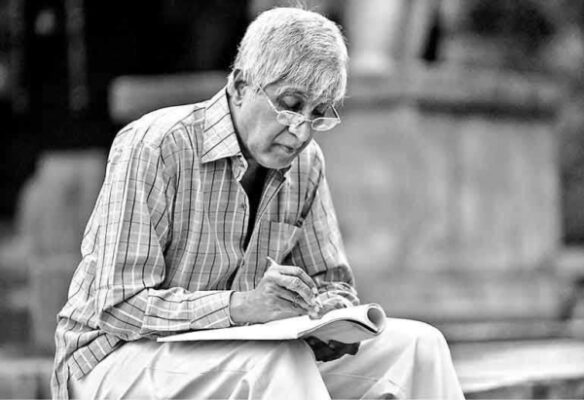
When Professor Sunil Ariyaratne was studying for the General Certificate of Education (GCE) Ordinary Level in 1963 at St. John’s College, Nugegoda, one of his favourite textbooks was W.A. Silva’s novel ‘Vijayaba Kollaya’.Fifty-six years later in 2019, the eminent academic-writer-lyricist-director has made a film out of the novel he relished reading as a student more than five decades ago. This was incidentally Professor Sunil Ariyaratne’s 23rd directorial venture .‘Vijayaba Kollaya’ was released on 1 August in 80 cinema halls in the island including those of the EAP circuit as well as the Savoy and Regal theatres in Colombo. It is the first three-dimensional stereoscopic film to be shot in Sinhala. The 130-minute-long film was produced by H.D. Premasiri for ‘Sarasavi Sine Ru’. Kumudini Dias Haputhanthri, Chandu Haputhanthri and Chandri Haputhanthri being the co-producers. The spectacular movie was produced at an alarming cost of Rs. 75 million.The screenplay for the film based was based on W.A. Silva’s novel was written by the artistic Tissa Abeysekara who completed the screenplay a few months before he passed away in year 2009. ‘Vijayaba Kollaya’ is the third film with Tissa’s screenplays to be released posthumously. The other two were ‘Kusa Pabha’ and ‘Senasuru Maruwa,’ both of which were released in year 2012.
“It had been Buddhi Keerthisena who first obtained the rights for the novel to be made into a film. He even got Tissa Abeysekara to write a screenplay to which Professor was grateful to Buddhi Keerthisena for giving him the opportunity to make a film based on the novel,In fact the earlier plan was for Keerthisena to produce the film under his Buddhi Films banner with Ariyaratne directing it. Even a ‘Muhurat’ ceremony was held at a Bambalapitiya restaurant in January last year. Later plans changed and there was a change of producers. Keerthisena is the Executive Producer of the film also was in charge of visual effects. W.A. Silva, ‘Vijayaba Kollaya,’ had never been filmed until then.To director Sunil Ariyaratne it had been a huge challenge to complete the film on this specific novel as also it was a huge budget that was needed also as a 16th century port environment had to be created for shooting.
.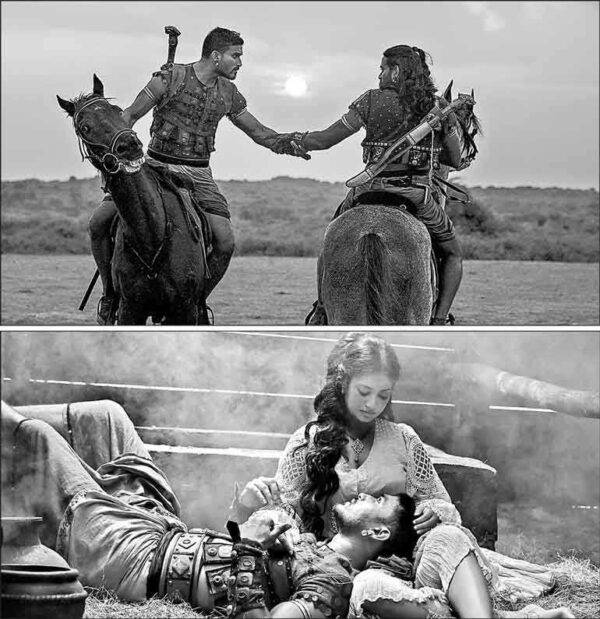
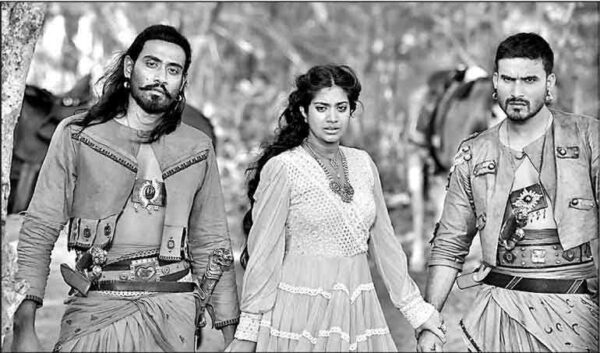
The ‘Vijayaba Kollaya’ of 1521 led to the trifurcation of the Kotte Kingdom and the rise of one of the most colourful Kings in Sri Lankan history – Mayadunne of Sitawake. According to historical texts what happened was this. After the demise of Dharma Parakramabahu IX, his son Vijayabahu VI ascended the Kotte throne in 1513. By this time the Portuguese had landed on our shores and the creeping colonisation of the island was underway.
Vijayabahu’s first queen was Anula Kahatuda, known as Keeravalle Maha Biso Bandara. Vijayabahu had three sons by her, namely, Buvanekabahu, Mayadunne and Pararajasinha also known as Maha Raigam Bandara. After Anula’s death Vijayabahu married another from the same Keeravalle family who was known as Keeravalle Biso Bandara. She had a son, Deva Rajasinha, fathered by another with her when she got married to Vijayabahu.
When Vijayabahu’s half-brother Sahalakalavalla the “Yuvaraja” died in Udugampola, the reigning queen wanted her son Deva Rajasinha to designated as Vijayabahu’s successor despite his three elder sons being the legitimate heirs of crowning age. The elderly Vijayabahu was willing to oblige his younger queen in this. For this to happen the three elder sons had to be eliminated. A conspiracy to kill the three princes was duly hatched with the connivance of two officials, Kandure Bandara and Ekanayake Mudaliyar. The princely trio got wind of the plot and fled to Negombo via Kelaniya and escaped.
Mayadunne, the most intrepid of the brothers, went to the central highlands and raised an army with the help of the Kandyan King Jayaveera Bandara who was married to Mayadunne’s cousin. Mayadunne camped with his army at Kelaniya where his two brothers joined him. Vijayabahu was in an unenviable situation as his subjects were unwilling to fight on his behalf against the princely trio. The people felt Vijayabahu had done wrong by his three sons.
The Kotte King then sued for peace and invited his sons for talks. The sons in turn demanded that the conspirators Kandura Bandara and Ekanayake Mudaliyar be sent to them to be executed. Vijayabahu sent both and Kandure Bandara was killed but Ekanayake managed to escape.
However, Vijayabahu and his queen plotted to kill the three princes when they came for negotiations. Some soldiers were kept in hiding and the guards were instructed to bar the doors after the princes entered the inner fort. But fate decreed otherwise. Seven-year-old Deva Rajasinha for whose benefit the assassination was being planned innocently informed the princes of soldiers being in hiding. The enraged princes stormed out of the ‘Etul Kotte,’ or inner fort. Their army was unleashed and the palace was ransacked. The King sought refuge in an upper room.
However, legend has it that no Sinhalese soldier was prepared to kill the besieged king. Hence it is believed that the deed was done by either a “Selamba” of unknown ethnicity or “Salman” a Muslim trader or possibly both. The fate of the queen and her son is yet unknown. Vijayabahu’s deposal and death is referred to as the ‘Vijayaba Kollaya’. His end in 1521 led to the fragmentation of his kingdom into three. The eldest son reigned in Kotte as Buvanekabahu XII. Pararajasinha ruled in Raigama as Maha Raigam Bandara. Mayadunne got the princedom of Sitawake.
It is against this historical backdrop that W.A. Silva wrote his bestselling historical novel. Silva’s novel revolves around among three fictional characters created by him and their love triangle. The trio were Neelamani the fair damsel and her two suitors Asanga and Nayananda. If W.A. Silva had taken liberties with history to write his novel of romantic fiction, Tissa Abeysekara too seems to have used his creative license to weave together an enticing screenplay. Sunil Ariyaratne brings into screen an alluring film with the aid of his actors, artistes and technicians. One cannot expect true history to be recorded faithfully in an entertaining film like this. However few film goers are likely to complain.
The love triangle displayed in the film is sheer melodrama. One supposes these are inevitable in a film aiming to attract the public at large. Neelamani played by the ravishing Senali Fonseka (Malani Fonseka’s niece) is the daughter of a courtier. She had been betrothed from her young days to Asanga played by Ashan Dias. Neelamani meets the courier/spy Nayanandana and it is a case of love at first sight. Hemal Ranasinghe acts as Nayanandana. Finally, Asanga meets with death. He dies in Neelamani’s arms after having bequeathed her to Nayanandana.
Apart from Hemal Ranasinghe (Nayanandana) Senali Fonseka (Neelamani) and Ashan Dias (Asanga), there is a cavalcade of actors playing different roles in the film. Outstanding among these are Hans Billimoria as the Portuguese captain and his mistress played by Chulakshi Ranatunga. Ryan van Rooyen and Gavin Ludowyk also act as Portuguese soldiers. Among others in the cast are Preethi Randeniya, Buddhika Jayaratne, Eardley Wedamuni, Prof. Ariyaratne Kaluarachchi, Gayana Sudarshani, Marion Wettesinghe, Sunil Costa, Anuradha Mallawarachchi, Sachithra Weerasinghe, Dhanushka Dias, Methin Jayasuriya and Ajith Shantha.
Channa Deshapriya remains true to form with his magnificent cinematography. Tissa Surenda whose craftsmanship is patently discernible is the editor. Bimal Dushmantha excels as the production designer and art director in this historical film where sets and décor are very, very important. Harsha Manjula is in charge of make up while Wenuka Wickremarachchi is the costume designer. Both make their mark in this period film where costumes and make up are of vital importance. The hair stylist is Haroon Shaideen.
The inimitable Rohana Weerasinghe is the music director. Umariya Sinhawansa and Sanuka Wickremesinghe lend their voices as playback singers. The toe-tapping number ‘Singili Nona’ has become popular overnight and is likely to secure a place along with songs like ‘Puruthukeesa Karaya’ in ‘Sandesaya’ and ‘Rosa, Rosa’ in ‘Lasanda’. Vimal Deshapriya is the chief assistant director while the production manager is Nimal Wijesiri Senadheera. The production coordinator is A. D. Ranjith Kumara.
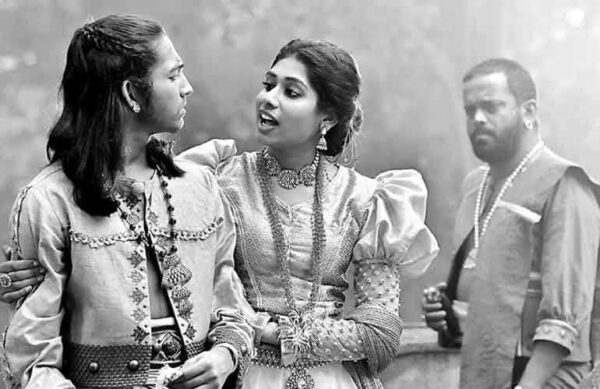
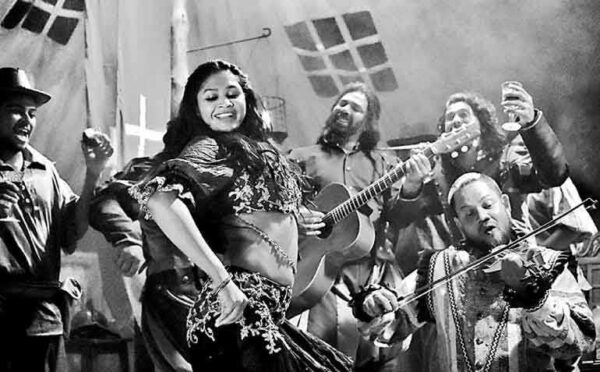
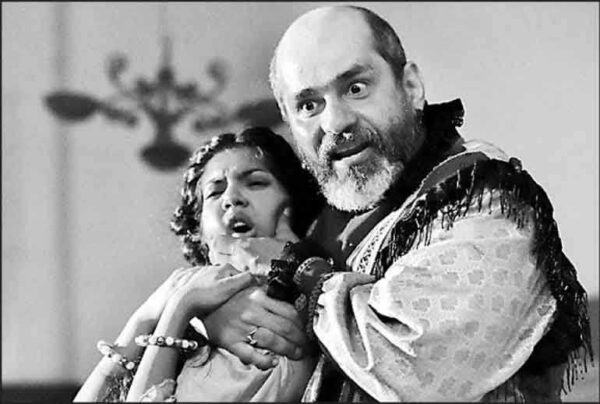
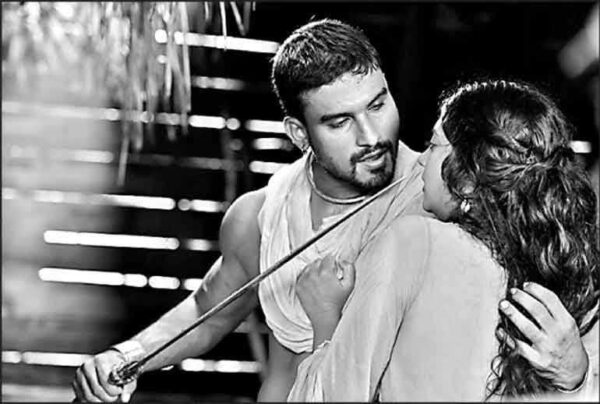
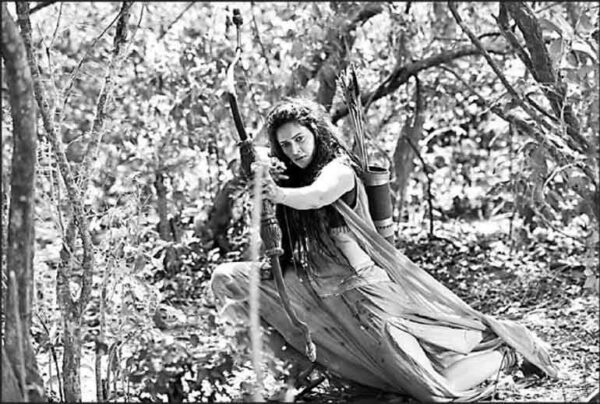
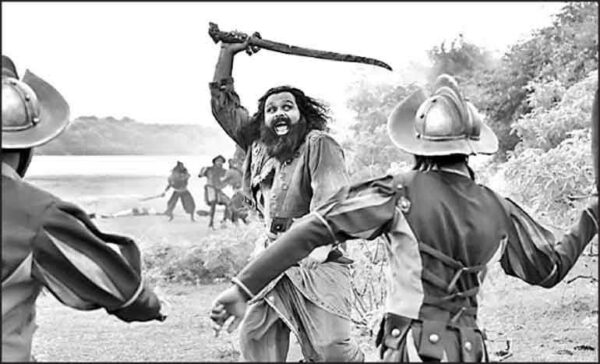
Professor Ariyaratne has revisited to filmmaking directing his 22nd film ‘Bimbhadevi’ alias ‘Yashodhara’, the narrative of the beloved wife of Siddhartha Gauthama. The titles roles of Siddhartha and Yashodhara (Lady of the Lotus) are portrayed by two Indian stars. .The film had been shot inside a massive set at Ranminitenna cinema village in Hambantota for 45 days in a strenuous schedule. It is learned that the two Indian stars selected had been enormously precise having portrayed their roles to precision.. Speaking about his selection of Indian stars to play the roles Siddharatha and Yashodhara,he had quipped that as the Indian stars suited to the roles much better.
In year 2019 Vijayaba Kollaya as Professor’s 23rd film direction was released which was a historical drama creation. It starred Hemal Ranasinghe, Senali Fonseka and Ashan Dias in lead roles while the music sound track was by maestro musician Rohana Weerasinghe, screenplay was written by Tissa Abeysekera the last before his death.
Professor had triumphed in the area for his lyrics for many songs where all our popular singers who had done justice by singing gorgeously. Early in his career when he wrote a song for Pandit Amaradeva “Bambara Petikke” to the music of Victor Ratnayake, Master had once earlier on had inquired ‘who is this “hadaya” who wrote these lyrics. Anyhow Professor continued to donate lyrics in the same vein had written hundreds of songs most of which had become trendy. A few of them that strikes any one are ‘Me guru pare,Podiduwage sina welai,Oba themei kiya bayyai,Api ethata ethata pa nagala,Viyo ge gayana,Yalu bala sande,Ane kurulu kooduwata gahanna ape’ etc. The critics say the lyrics of the song Buddhanu Bhawena is a song like a Buddhist stanza which is one of rare Buddhist songs to bless the noble triple gem to bring prosperity to our country. The lyrics of Professor are full of tinge, wordplay, innovation, allusions, and gorgeousness. For his lyrics he had won six Sarasaviya awards, four Presidential awards from the year 1981, while for the lyrics in Tele dramas Professor has also won three awards.
Senior professor Sunil Ariyaratne had also won several honorary awards which proves him to be the finest among the best. Wishwa Prasadini Award, Vidyodaya Vibhushana Honorary name, Sahithya Kala Shiromani Honorary award,and the Kamban Award, are some such awards that he had won.
In the context of the foregoing for his many milestones of achievements, it would be the fervent hope of all art loving people to wish Professor good health, longevity and courage to continue his superlative endeavours to the utmost to delight the artistic Sri Lankan’s in the motherland and abroad with more such creations.
Sunil Thenabadu in Brisbane
email sthenabadu@hotmail.com..
whatsApp 0061444533242







